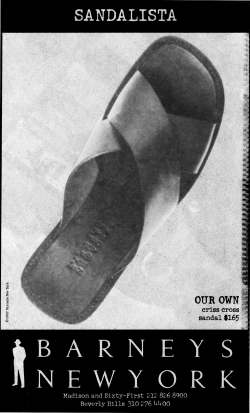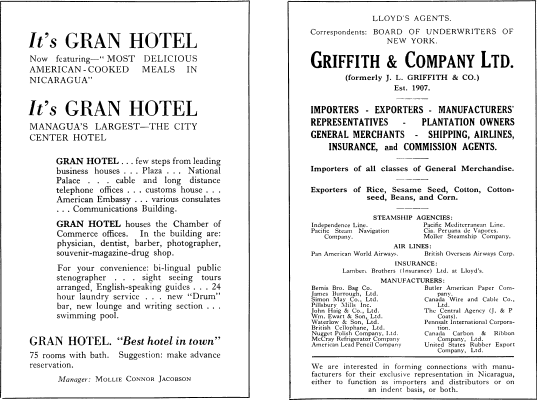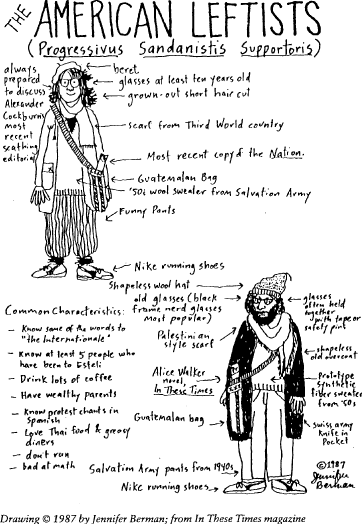
F L O R E N C E E . B A B B
Recycled Sandalistas: From Revolution to Resorts
in the New Nicaragua
ABSTRACT
In the post-Sandinista period, Nicaragua has adjusted to the new terms of a neoliberal economy by turning to tourism development as a leading industry. As the nation is refashioned as a safe and desirable tourist destination, efforts have been made to conceal evidence of the recent revolutionary past that might discourage visitors from traveling to the country. Nevertheless, there are indications that selected images and memories of revolution are making a reappearance and may prove marketable for tourism.
This article argues that the twin projects of neoliberalism and nationalism may be served by this seemingly contradictory process. The Nicaraguan case offers an example of how the past figures in the remaking of postrevolutionary nations for tourism in the era of globalization. [Keywords: tourism, revolution, Nicaragua, cultural politics, globalization]
Managua, Nicaragua what a wonderful spot,
featured a lengthy article on travel in the “new” Nicaragua.
There’s coffee and bananas and a temperature hot.
Here, however, the term has acquired a new meaning. The
Managua, Nicaragua is a beautiful town,
author gushes, “Here come the foreigners: ‘ sandalistas’ with You buy a hacienda for a few pesos down.
backpacks, businessmen in short-sleeved shirts trying to
—Irving Berlin, recorded by Guy Lombardo, 1947
look tropical casual, church missionaries sweating under
straw hats, and me” (2002:100). He goes on to confess that
And why must we develop tourism in this God-forsaken
country? Because it’s the path to salvation for the
although he is a journalist, on that day he was doing what
national economy.
many other U.S. tourists have been doing in Nicaragua:
“scouting property” (2002:100). In fact, many of the 360
—Comandante Tomás Borge, 20031
small islands in Lake Nicaragua are up for sale and are be-
INAPRIL2002,Icameacrossanadvertisementinthe ingpurchased“forasong”byU.S.residentslookingfora New York Times for sandals from Barneys with a single bargain. Although the article describes Nicaragua as “a little word that caught my eye: Sandalista (2002:7). It was not rough around the edges” (2002:99), readers are assured that only the word but also the bold font used that clearly in-a trip is well worth it, because the country has had a real vested the word with political meaning. Surely, I thought,
makeover since the revolutionary period (1979–90).
there are few readers of the Times who will realize that this For the past 15 years, I have observed the quickening
was a term used in Nicaragua during the 1980s to refer to in-pace of change in Nicaragua2—or at least the appearance of
ternational supporters of the revolutionary Sandinista gov-
substantial change, even if the country has been on a rather ernment then in power. Certainly, most of those attracted
grim program of neoliberal free-market development since
to the photograph of a single shoe, a sort of upscale version the Sandinistas lost the 1990 election. The measures that
of the rubber tire-soled sandals worn by the rural poor in
have been mandated by the International Monetary Fund
Latin America, here selling for $165, would make no such
and administered by the U.S. Agency for International De-
connection (see Figure 1). But when I was in Nicaragua over velopment have produced a turn toward economic priva-the summer and showed the ad to several U.S. citizens liv-
tization and the shrinking of state-led social development.
ing in the Central American country, they reacted as I had.
This has meant rising unemployment, ill health, and grow-
Seeing the ad took their breath away.
ing illiteracy for a majority, while a small elite benefits from Another recent invocation of the word sandalista is new products on the market, new restaurants and clubs, and
found in the February 2002 issue of Condé Nast Traveler a new look to the capital city of Managua, where a third of (Wilson 2002:98–112), the glossy travel magazine, which
the nation’s population lives (Babb 1999). Other parts of
American Anthropologist, Vol. 106, Issue 3, pp. 541–555, ISSN 0002-7294, online ISSN 1548-1433. C 2004 by the American Anthropological Association.
All rights reserved. Send requests for permission to reprint to: Rights and Permissions, University of California Press, Journals Division, 2000 Center Street, Suite 303, Berkeley, CA 94704-1223.

542
American Anthropologist • Vol. 106, No. 3 • September 2004
adventurous backpackers uneasy. Today, in contrast, the na-
tion attracts these travelers and others desiring more luxurious accommodations. While postrevolutionary Nicaragua
remains one of the poorest countries in the hemisphere, it
is suddenly getting the attention of those who shunned it
only a few years ago. Nicaraguans themselves are divided
between cynicism and a desire to bring needed revenue to
their impoverished, neoliberal economy. I am interested in
discerning how these developments are being experienced
locally and globally, as the Nicaraguan nation is recon-
structed as a safe and desirable location that offers both the
“traditional” and the “modern” for foreign consumption.
Furthermore, and more broadly, I am interested in the
ways that some places appeal to travelers who are seeking
more than a comfortable holiday at the beach or visit to
colonial towns. Recently, we hear of not only “political”
tourism but also “danger” tourism; not only religious pil-
grimages but also “red” pilgrimages to postsocialist coun-
tries; not only “socially responsible” tourism but also tours to the world’s “trouble spots.” Newsweek International reports on organizations like San Francisco–based Global Ex-
change, which takes groups to such destinations as Kabul
to “vacation in the remains of the Afghan capital” (Eviatar 2003). Other groups visit “areas under siege” in Israel and the Palestinian territories, or learn about “social struggles”
in Chiapas, Mexico, and the “legacies of war” in Vietnam
(www.globalexchange.org). Having traveled with this orga-
nization to Cuba twice over the past decade, I am aware that some group members particularly relish going to a country designated as illegal for U.S. tourists, requiring special licenses for entry. I will suggest that Nicaragua holds the same allure for travelers who desire to see for themselves
“the land of Sandino,” even years after the demise of the
revolutionary government.
FIGURE 1. Advertisement for sandals, appearing in the New York Scholars of tourism have theorized the development of
Times, April 14, 2002. (Courtesy of Barneys New York) what is today, according to many sources, the world’s largest industry. Dean MacCannell’s classic text The Tourist, first published in 1976, delved beneath surface appearances to
the country, notably the colonial city of Granada and the
advance the argument that tourism offers “staged authen-
Pacific Coast, have also seen a host of renovation and con-
ticity,” inviting visitors to “make incursions into the life struction projects designed to attract moneyed interests and of the society” (1999:97). More recently, writers have em-tourism. Examining these localities in the midst of a fairly phasized that representations and readings of tourist sites rapid process of change can tell us much—beyond this par-are always contested, so that the sites and their meanings
ticular case—about the politics of location in a period of
are subject to interpretation (Hanna and Del Casino 2003;
globalization (Appadurai 2001; Gupta and Ferguson 1997).
Rojek and Urry 1997). My work follows this line of research Two decades ago, Nicaragua was the destination of
insofar as I view tourism as a set of cultural practices that
“tourists of revolution,” in the wry words of poet Lawrence are under constant negotiation and that may illuminate
Ferlinghetti (1984). Now it is being refashioned as the des-broader social and historical processes. Most significantly, I tination of another category of tourists, some adventurous
have sought to contribute to studies of tourism in past and and environmentally conscious and others simply eager
present “danger zones,” in this case a revolutionary society to find an untraveled spot in the tropics. Here I consider
experiencing prolonged instability and civil war, being ever the remaking of the country, from within and without,
mindful of the ideological projects that are under construc-as Nicaragua struggles to make tourism its leading indus-
tion as nations establish the historical accounts that they try (surpassing coffee production), and as an international wish to represent (Gold and Gold 2003; Rojek 1997).
clientele discovers a new region to call its own. Until re-
The first section of this article considers prerevolu-
cently, the revolutionary nation was considered off limits
tionary travel and later “solidarity” travel to the country to uninformed travelers and its inconveniences made even
through textual and ethnographic analysis. The second
Babb • Recycled Sandalistas
543
section, based on my travel to tourism sites and inter-
scribed as “imperial eyes” producing “the rest of the world”
views with tour operators, government officials, and tourists (1992:5).
themselves, examines the way in which Nicaragua has un-
During four decades prior to the Nicaraguan revolu-
dergone a transition from being a revolutionary destina-
tion, the Somoza family dictatorship held sway and im-
tion to one of interest to mainstream travelers. The third
posed harsh conditions for the majority of citizens of the
section presents evidence from recent research that, con-
country. Nevertheless, the Somoza period held certain plea-
trary to my earlier expectations, indicates that the revo-
sures for the national and international elite. The widely
lution is making a reappearance on the tourist circuit. By
traveled British writer Maureen Tweedy wrote a memoir en-
considering the Nicaraguan case, I will illustrate what may titled This Is Nicaragua (1953), in which she compared the also be observed in other postrevolutionary societies such
country favorably with her own. She paid Nicaragua her
as Cuba, China, and Vietnam, as the past figures in the re-
highest compliment when she wrote, “The placid river flow-
making of these nations for tourism in the present era of
ing so gently through the cattle sprinkled meadows beyond
globalization.
Nandaime reminds me of the upper reaches of the Thames”
(1953:60). She admired the people as well for their simple, friendly manner, writing, “In the springtime, in preparation NICARAGUAN TRAVEL, PAST AND PRESENT
for Holy Week, the thrifty peasants build huts and shelters Long before revolutionary Nicaragua was remade as a tourist of pineapple leaves, palms and bamboos, to rent to the pic-destination, the country captured the interest of foreigners.
nickers and bathers who throng the beaches” (1953:61). The
In earlier times, the country attracted some adventurous
book concludes with Indian legends, and then advertise-
travelers who were making their way by sea from one coast
ments for Coffee Planter and Exporters based in Managua, as to the other in the United States or who were going on to
well as for the capital city’s Gran Hotel and Lido Palace Hotel Europe via the Central American Isthmus. No less celebrated (see Figure 2), which offered amenities to foreign guests.
a traveler than Mark Twain ventured there with a com-
Folkloric and modern images of the country thus shared
panion by ship from San Francisco during a transatlantic
the same textual space.
voyage in 1866–67. This was only a decade after William
The Sandinista victory in 1979 drew another class of
Walker, the U.S. expansionist, defeated warring factions in travelers to Nicaragua. Journalists, artists and writers, engi-the country and made himself president, ruling for a year
neers, and activists of many backgrounds made their way
before he was routed. Writing Travels with Mr. Brown for the to the country, often in delegations, from the United States San Francisco Alta California, Twain described the passen-and elsewhere. Some stayed for a time and wrote books
gers’ arrival at the Nicaraguan port town of San Juan del
based on interviews with militants and celebrated figures,
Sur during an outbreak of cholera. He and his companion
for example Margaret Randall’s Sandino’s Daughters (1981), found “a few tumble-down frame shanties—they call them
or memoirs, notably Lawrence Ferlinghetti’s Seven Days in hotels—nestling among green verdure
and half-clad yel-
Nicaragua Libre (1984) and Salman Rushdie’s The Jaguar
.
.
.
low natives, with bowie-knives two feet long,” the citizens Smile (1987).3 Some visitors came simply to see the revo-of the town (Walker and Dane 1940:39). Some four hun-
lutionary society for themselves and others determined to
dred passengers endured 12 miles of land travel by horse,
stay a year or longer in order to contribute to what many of mule, and vehicle to Lake Nicaragua in order to cross the
them viewed as the most significant process of social trans-Isthmus. This gave the two men a chance to appreciate
formation in the Americas since the Cuban revolution. A
the passing scene, about which Twain wrote, “Our interest
cottage industry in guidebooks for internacionalistas (inter-finally moderated somewhat in the native women
but
national activists) grew out of the solidarity movement in-
.
.
.
never did the party cease to consider the wild monkey a
flux to Nicaragua during the 1980s.
charming novelty and a joy forever” (Walker and Dane
The new travel guides were an amalgamation of brief
1940:42).
historical and cultural background, emphasizing the pro-
In the 1880s, a female member of the east coast
found changes recently brought about, along with practical
elite named Dora Hort made the trip from New York
information about where to find cheap lodging and meals,
by steamer along with her sister, a gentleman compan-
survive the tropical heat, and link up with other solidarity ion, four nephews and nieces, and a male servant, cross-workers. One, entitled (like Tweedy’s book) This Is Nicaragua ing the Central American Isthmus before taking a boat
(1988), was made available in several languages by the
bound for San Francisco. The fascination that this Victo-
Nicaraguan Institute of Tourism and could be purchased on
rian lady traveler held for Nicaragua and its people is re-
arrival in Managua. It mimicked standard travel books in
vealed in her memoir, Via Nicaragua, published in 1887.
its attention to the natural environment and the everyday
Hort describes the arduous trek through jungle with bril-
concerns of getting around a new place, but with one major
liant birds and an “imbecile” guide who led them across
difference: The guide begins by celebrating the “General of to the “uninteresting, desolate hamlet of San Juan del
Free Men,” national hero Augusto César Sandino who was
Sur” (Agos´ın and Levision 1999:223)—which has become
killed by Somoza’s National Guard in 1934, and by herald-
a popular resort town in recent years. Early travel writers ing “a new geography for a new nation” (1988:xi–xiii). In-like Hort exemplify what Mary Louise Pratt has aptly de-
deed, the Sandinista government redivided the country into

544
American Anthropologist • Vol. 106, No. 3 • September 2004
FIGURE 2. Advertisements appearing in travel writer Maureen Tweedy’s This Is Nicaragua (Ipswitch, England 1953).
political and geographic regions and gave revolutionary
named for an urban combatant who was shot in the neigh-
names to the streets and neighborhoods of the capital city.
borhood by the National Guard in 1978. The barrio is some-
The new political culture was imprinted on the national
times referred to as “Gringolandia,” since so many U.S. and landscape, not only through rezoning and renaming but
European travelers have made its inexpensive hostels their
also through the widespread painting of murals and con-
base camp. Buses arrive and depart frequently in this barrio struction of monuments to the people’s history of struggle
for neighboring Honduras and Costa Rica, so that there is a (Kunzle 1995; Sheesley 1991; Whisnant 1995).
steady flow of budget and activist travelers making their way Some guidebooks were clearly directed to the new breed
through Central America, along with others who stay much
of visitors to the country. Not Just Another Nicaragua Travel longer in Nicaragua. From the barrio, travelers may walk
Guide (Hulme et al. 1990) proclaimed its intention loudly, to the shore of Lake Managua and pay respects nearby in
and ads in its front matter included not just hotels and car Plaza de la Revoluci ón (now renamed Plaza de la Rep ública); rental agencies but also language and culture schools, fair there they may visit the National Palace (now the National
trade coffee outlets, and the Bikes Not Bombs recycling out-Museum), which was famously taken during the insurrec-
fit in Managua. Readers were congratulated for choosing to
tion by Sandinista Comandantes Eden Pastora and Dora
travel to a place that was “poised on the cutting edge of his-Mar´ıa Téllez, and the tomb of the celebrated martyr Carlos tory,” serving as a “perfect vantage point to study the world”
Fonseca.
(1990:9). The country was summed up in a few words: “Rev-
After the Sandinistas lost the 1990 elections to the op-
olution. Empty beaches. Lifelong friends and cheap rum.
position candidate Violeta Barrios de Chamorro, some loyal
Priests, poets and rocking chairs” (1990:9). Many young
solidarity workers remained in the country and some curi-
people from the United States used the book to find their
ous travelers continued to arrive looking for traces of rev-way to Managua’s centrally located Barrio Martha Quesada,
olution. Their number was much reduced, but they could

Babb • Recycled Sandalistas
545
FIGURE 3. Cartoon appearing in In These Times in 1987, entitled “The American Leftists,” with references to internationalist supporters of the Sandinista revolution. (With permission from Jennifer Berman) be recognized by their oversized backpacks and copies of
casual remark presages the rapid sales of islands to foreign-such “alternative” resources as the Ulysses travel guide to ers, as recently trumpeted in Condé Nast Traveler.
Nicaragua (see Figure 3). In its second edition, author Carol Wood’s (1999) tone is still sympathetic to the Sandinista
government and what it accomplished, but she acknowl-
FROM REVOLUTION TO RESORTS
edges that Nicaraguans became weary of the U.S. opposition
The Chamorro government did not bring about the eco-
that produced the Contra war and the economic embargo.
nomic recovery that had been promised following the
There is more attention to the natural wonders of the coun-
national election, but political stability was gradually
try than to its politics. Indeed, the guide even urges visitors achieved with the cooperation of the Sandinista party.
not to miss touring the Isletas, the small islands in Lake
When the United States failed to offer assistance at the
Nicaragua, noting that “It’s a great spot to dream about liv-level expected and international coffee prices plummeted,
ing on your own little tropical paradise” (1999:162). This
Nicaragua sought to develop tourism. By the mid-1990s
546
American Anthropologist • Vol. 106, No. 3 • September 2004
the Nicaraguan Institute of Tourism (INTUR), in collabo-
Before making my way to INTUR (part of the govern-
ration with the national universities, promoted tourism as
ment’s Ministry of Tourism) in Managua in 2002, I had been
a key area for professional training. Reports of increasing interested to discover its colorful and attractive website.4
levels of tourism showed that while the largest influx of vis-The site offers a brief introduction to the country, a friendly itors still came from the Central American region, a new
appeal to tourists, and advice to those investing in the
class of tourists was coming to the country from the United tourist industry or buying up private property. The IN-States and Europe. Efforts were made to capture more of this TUR office itself, tucked away just a few blocks from the
market, through improvements in infrastructure catering to
landmark Intercontinental Hotel, was not as impressive. A
tourists and more effective means of marketing the coun-
woman at a desk in the small reception area welcomed me
try as a tourist destination (Ministerio de Turismo 1995). By and offered several brochures featuring the usual half dozen the year 2000, the annual number of visitors to Nicaragua
attractions, all outside of Managua: Masaya and its volcano, approached 500,000, significant in a country with a popu-Granada, Le ón, San Juan del Sur, Montelimar, and the R´ıo
lation of four million—although as many as half came for
San Juan (serious travelers would also be told about Selva
business rather than pleasure. The goal became to entice vis-Negra and the Atlantic Coast). She told me that on a typical itors to stay longer and spend more money, and to provide
day only about three visitors come to their office. Across
more facilities for them to enjoy during their stay (Instituto the street, there was more activity in INTUR’s documen-Nicaragüense de Turismo 2001:5).
tation center, as secondary school and university students
To that end, a number of sites have been enhanced
crowded the few tables there. The woman heading the cen-
and promoted for tourism. The premier Pacific Coast beach
ter confirmed that they were students of tourism, which
destination Montelimar, which formerly was owned by the
has replaced computer school as young people’s best hope
Somoza family and then nationalized under the Sandin-
for future employment. The walls of the room were deco-
istas, was sold to the Spanish interest Barcel ó and turned rated with framed pictures of the country’s natural beauty
into a five-star, all-inclusive resort. San Juan del Sur worked and folklore; a portrait of a woman entitled “India Bonita”
hard to attract cruise ships to its sleepy fishing village and to was emblematic of both aspects that INTUR hoped would
appeal to a younger and environmentally conscious clien-
enhance tourism (field notes, June 18, 2002).
tele to come to newly constructed guest houses and hotels.
Although Managua has had a major facelift, with im-
Selva Negra, in the mountainous north, also sought to capi-
proved roads, a new city center, hotels, casinos, and shop-
talize on a more robust tourist industry to draw visitors to its ping malls in the area left devastated by an earthquake in
German-style cottages and restaurant, where guests could
1972, Stephen Kinzer, writing in the New York Times, re-visit the local coffee plantation and walk through tropical cently described it as “still among the ugliest capital cities in forest to spot howler monkeys and exotic birds. The colo-the hemisphere” (2002:10–12). Visitors to the city are gen-
nial city of Granada was privileged to have a more com-
erally there on professional business, as I learned during for-plete makeover as a charming destination or stopping-over
ays into the Princess Hotel, Holiday Inn, and Hotel Legends.
place for those traveling through the country. Already an
Employees at the hotels offer suggestions about night spots architectural marvel and historical draw, the city received and a few places worth visiting in the city, but in general international support to renovate and restore its cathedral, Managua is regarded as uninviting to international visitors convent, central plaza, cultural institute, and oldest ho-who would rather venture out to other parts of the coun-
tel, making it attractive to international visitors. By adding try. Tour operators often recommend just a half day in the
canopy tours of the nearby forest and boat trips to the Islecity to see the ancient footsteps of Acahualinca (evidence of tas, the city has catered to the diverse interests of travelers early human presence), the National Museum and the Na-in recent years.
tional Theatre, and the view from Sandino Park. Those who
Research over the last decade in Nicaragu







